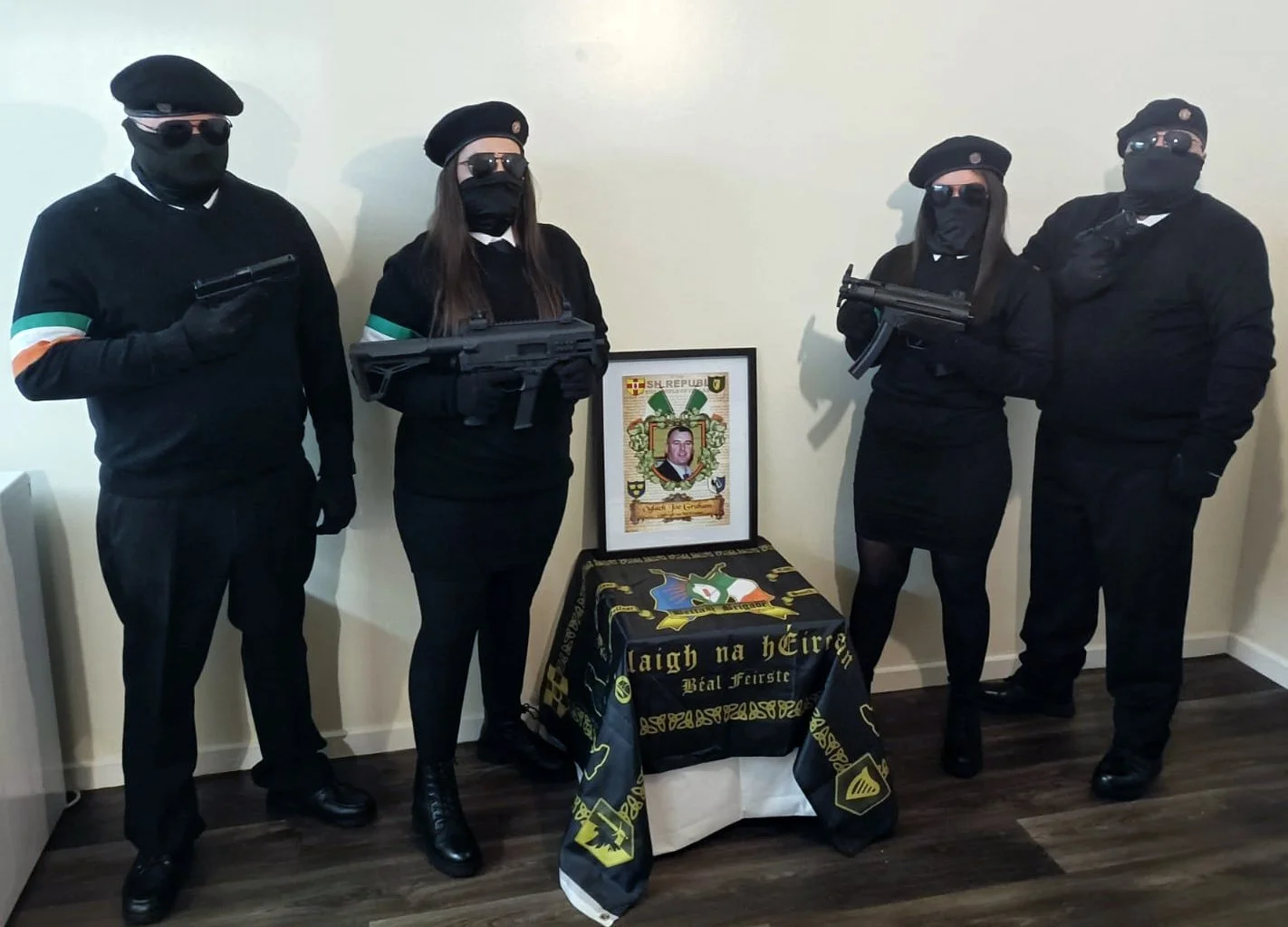ONH Photo Is a Sign of Their Violent Capability
Executive Summary
A recently circulated photo of armed members of Óglaigh na hÉireann (ONH), an Irish dissident republican group, highlights the organization’s continued access to weapons and operational readiness amid escalating internal feuds and renewed attention from authorities. The image, featuring members with a range of firearms including 3D-printed FGC-9 carbines and Glock pistols, comes at a time when ONH is embroiled in violent internal disputes, with some members defecting to rival groups such as the New IRA. This show of force underscores both the group’s defiance and the threat posed by its internal instability, even as new legislation seeks to strip them of the right to use the “Óglaigh na hÉireann” name.
Analysis
The release of a photo showing ONH operatives armed with both traditional and 3D-printed firearms signals the group’s evolving capabilities and intent to remain visible and relevant despite internal fractures. Dissident activity in Northern Ireland has ebbed and surged over the years, with ONH historically known for punishment shootings and attacks on British state targets, including a high-profile bombing at MI5 headquarters in 2010. The group’s ceasefire in 2018, once seen as a possible pivot toward political engagement, appears increasingly defunct.
The reemergence of armed propaganda is occurring amidst rising tensions within ONH, where a deep split has led to at least one attempted assassination and public accusations among rival factions. The recent shooting of Sean O’Reilly, a known Republican Network for Unity member and former prisoner, is believed to be linked to a factional rift, with his attackers reportedly associated with a breakaway ONH group preparing to join the New IRA.
This infighting has not only escalated violence in Belfast, where ONH is accused of eight unsolved murders, but has prompted increased PSNI patrols and warnings from police against retaliation. The chaos is amplified by the power struggle between ONH leaders Carl Reilly and Tony McDonnell, once allies, now locked in a bitter feud over strategy, funding, and direction. Reilly’s attempt to seek peace funding has alienated hardliners, pushing many to side with McDonnell or abandon the movement altogether.
Meanwhile, political efforts in the Republic of Ireland aim to legally restrict use of the term “Óglaigh na hÉireann” to official defense forces, a move largely symbolic but underscoring the state’s desire to sever any association between legitimate military service and paramilitary violence. Though unlikely to deter committed dissidents, such legislation seeks to reinforce a national narrative distancing modern Ireland from the legacy of militant republicanism.
The reappearance of ONH’s armed imagery serves not only as a reminder of their past lethality, but also as a warning that intra-republican feuds — combined with access to modern weaponry — remain a volatile and dangerous element in the post-conflict landscape of Northern Ireland.


